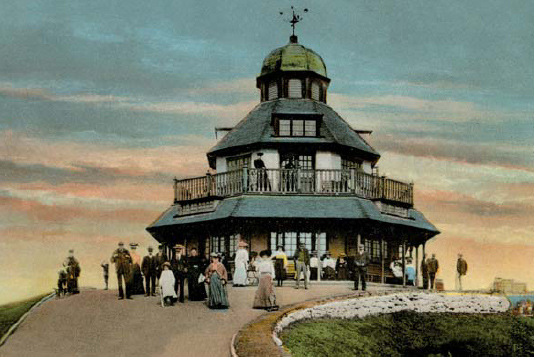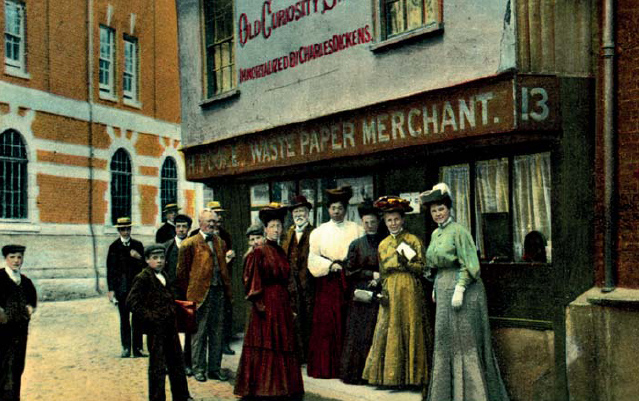

An open tram taking a group of holidaymakers on a ‘circular tour’ of Blackpool, c.1910. These tramcars were known locally as the ‘toast racks’ because of their appearance when empty. Such tours were the precursors to the open-top bus tours offered in many towns and cities today. The particular view was available either as a sepia card, or the fully tinted version as seen here. Llandudno, Colwyn Bay and other resorts also operated tramcars of this design.
‘Sight-seeing, in the opinion of many experienced travellers, is best avoided altogether’, wrote Charles Dickens Jnr. ‘It may well be, however, that this will be held to be a matter of opinion, and that sight-seeing will continue until the arrival of that traveller of Lord Macauley’s, who has found his way into so many books and newspapers, but whose nationality shall not be hinted at here. One piece of advice to the intending sight-seer is at all events sound. Never go to see anything by yourself. If the show be a good one, you will enjoy yourself all the more in company; and the solitary contemplation of anything that is dull and tedious is one of the most depressing experiences of human life. Furthermore, an excellent principle – said to be of American origin – is never to enquire how far you may go, but to go straight on until you are told to stop. The enterprising sight-seer who proceeds on this plan, and who understands the virtue of “palm oil”, and a calm demeanour, is sure to see anything he cares to see.’
Those words were written in 1887, and it would appear few heeded them – certainly as far as avoiding sightseeing is concerned. The Victorians and Edwardians developed a considerable appetite for the practice, embracing and enjoying guided tours just as much as individual exploration.

A group of holidaymakers enjoying the views from Fleetwood’s Mount Pavilion, c.1906.

American holidaymakers on a sightseeing tour of London pose outside the Old Curiosity Shop in London’s Portsmouth Street, made famous by Charles Dickens in the novel of the same name. Home to a waste paper merchant in 1908, today an antique shop occupies the site.